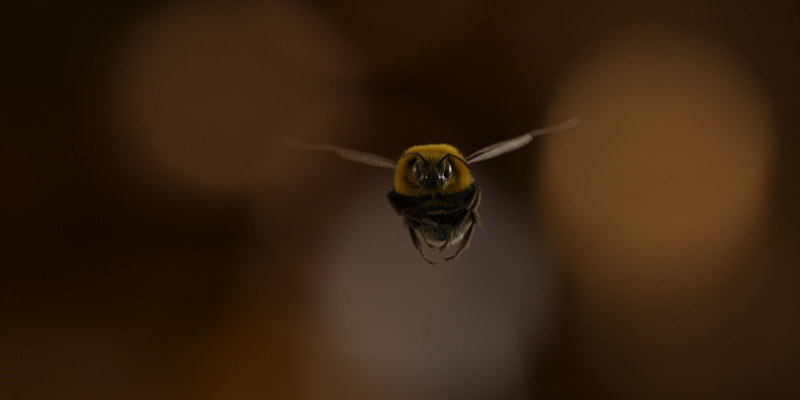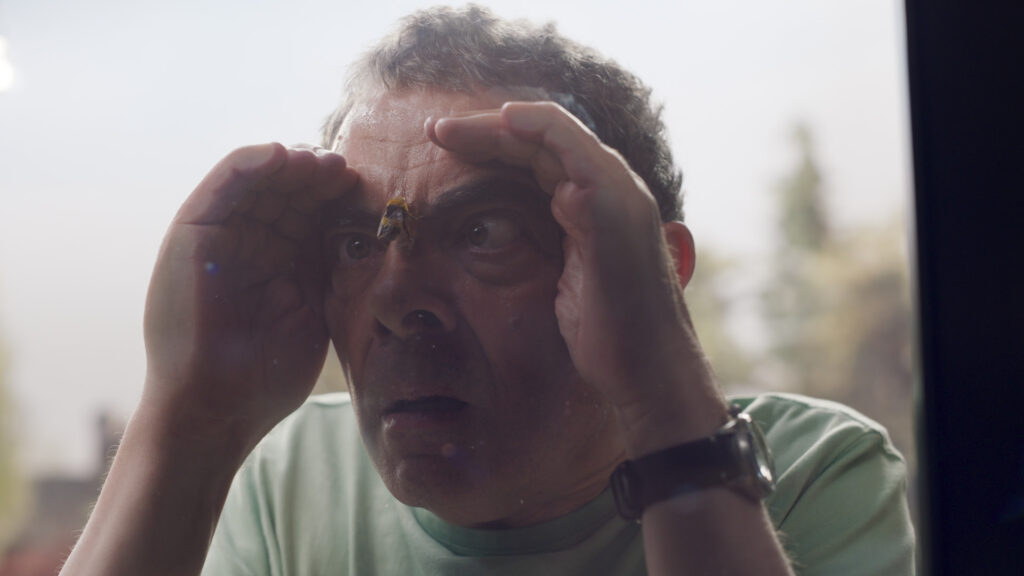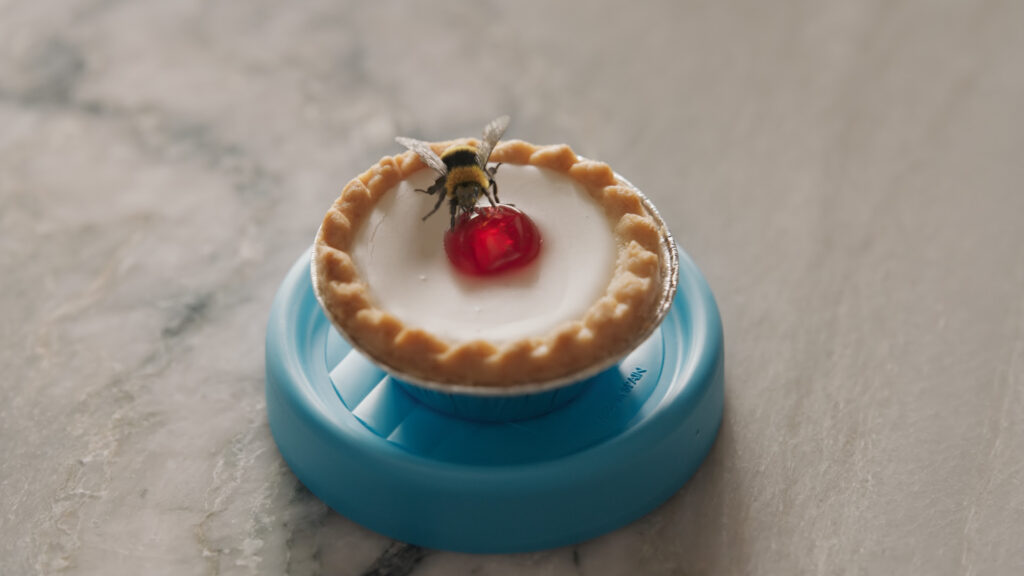
Running over nine episodes, Man Vs Bee is a brand-new comedy starring Rowan Atkinson, which marks the actor’s debut on Netflix. In this comedy series, Atkinson will reunite with Will Davies and Chris Clark who he worked with on the Johnny English films. Within the comedy, the protagonist Trevor, played by Rowan Atkinson, enters into an unexpected clash with a plucky bee whilst housesitting a mansion.
“Framestore and their work, as ever, was exemplary. The show was conceived and produced during Covid-19, so its scheduling was extremely challenging, but Framestore could not have been more helpful to the production and diligent in their dogged pursuit of excellence. The results, I think, are astonishing,” said Rowan Atkinson about Framestore.
Director David Kerr said, “Framestore gave us our co-star: a bee so beautifully animated and richly-rendered it seems every bit as real and characterful as its human counterparts. Rob Duncan and his team were wonderful collaborators. From the outset, we worked hand-in-glove, choosing a specific real bee as our reference; finessing animation so that every detail could imply the bee’s attitude to Trevor; dreaming up ways the bee’s physicality could be transformed in reaction to Trevor’s attacks. The Framestore team worked not only on the bee but on a host of other really ambitious VFX shots. At every stage of the process, working with them was a joy.”
Framestore’s core team consisted of VFX supervisor Rob Duncan, who has worked on two films with Rowan Atkinson: Mr Bean’s Holiday and Johnny English Reborn. Alongside him were comp supervisor Ollie Bersey, CG supervisor Johannes Sambs, animation supervisor Binal Shah and VFX producer Standish Millennas. Focussing on crafting the bee, together they brought a full suite of VFX skills to the production both on set and in post-production and delivered 600 shots in total with 202 shots of the bee.
As the bee was only one inch long it posed some interesting challenges. Duncan was keen to use stand-in bees on the shoot, which were puppeteered by a professional puppeteer. This enabled Duncan to direct their actions on-set, in anticipation of carrying the spirit of the bee’s movement all the way through to the CG character later on in post-production. The puppet bee gave Atkinson the opportunity to react to something live on-set, which would be really useful in achieving believable interaction in the final scenes.
Rob Duncan said, “We had some bee proxies made and placed on the end of a fishing rod, which sounds very simple, but it’s got to behave like a bee, and when it’s done poorly there can be a disconnect between what the actors are doing and how you are animating your character, so I decided to use puppeteering. I’d done a lot of research into bees at this point, including how fast they move and how much they meander, so we had some basic ground rules locked in and as the puppeteer was a performer, they were able to subtly manipulate the one-inch proxy and imbue a character into that.”
A big bulk of the asset build was the groom variations created by Samb’s team and animated by Shah’s team. However, they were careful to keep the character realistic and not stylised to make sure it always felt like an actual bee.
Sambs added, “We had a lot of different groom variations because the bee is going through so many different scenarios, which I think is one of the most exciting things about the job. It gets soaked in a shower, sucked up in a vacuum cleaner, blow-dried into a puffball, and picks up all sorts of debris and particles along the way. Part of the brief was that the bee shouldn’t look menacing, but if you zoom into a bumble bee head it becomes quite alien-looking and creepy, so we had to find a way of maintaining realism whilst ensuring a friendly-looking bee no matter how close up we are.”
“The groom variations helped convey a bit of subtlety and emotion without forcing the bee to do something that it wouldn’t do otherwise in nature. In terms of animation, we didn’t have a lot of reference for a sad bee, so we played around until we found a pose that looked like a forlorn bee, and it worked out well,” added Shah.
The team also created some beefy effects, with one sequence involving Trevor luring the bee into a beehive which was rigged with explosives, leaving the bee looking the worse for wear.
Duncan continued by saying, “It was a chance to have a bit of fun and a valid reason to change the look of the character. We wanted to feel like it had sustained some damage, but nothing too life-threatening. Really it was up to us to come up with those looks as they were not defined in the script and for us, it seemed to be a good opportunity to add value to the character.”
From the outset it was clear that there would be many dozens, if not hundreds, of shots requiring a CG bee, so the investment was made up front to streamline the VFX workflow so that finished-level shots could be turned around quickly to put in front of the filmmakers for their comments.
“Generally, there’s quite a delay between the various stages, but for this project, we could animate a bee in the morning and see it comped in the plate by the afternoon, which helped create an efficient feedback loop,” said Shah.
One of the biggest tests the team faced was portraying the bee’s POV.
Ollie Bersey said, “There were a small selection of shots depicting the point of view of the bee in flight which was photographed using a camera normally used for VR capture, with a 360-degree field of view, this allowed us in post-production to very carefully adjust where the bee was looking as he flew around the house or the garden. This required quite a lot of look development, which was all done in the comp, to come up with a plausible representation of what a bee might see.”
For the car scenes, which involved Trevor driving and dodging traffic, the team looked to Framestore’s virtual production toolkit, opting to use an LED volume, shot at 80six, which gave them increased flexibility especially when it came to interactive lighting and ultimately helped them support the actors’ performance.
Bersey continued, “LED work does bring an awful lot to a piece, particularly in a car where you’ve got loads of chrome, interactive lighting and reflections. If you used a conventional green screen stage you would really miss the detail.”
Rowan Atkinson attended most of the team’s reviews with the majority of his feedback focussed on the timing of the bee, down to the most minute level.
Standish Millennas added, “It was a thrill and an honour to work with Rowan Atkinson, he’s very experienced with the post-production process and understood the stages we needed to get through before presenting a finalised shot, so he was happy to see work in progress and understand its potential. He is the master of physical comedy and has extraordinary attention to detail, which pushed us repeatedly in a good way.”
Duncan concluded by stating, “I think our reputation at Framestore is very much in creative character animation whilst also ensuring that those characters can behave exactly like the real thing if required. We had to stay on the right side of the line of it being a believable insect rather than a caricature. There is a real skill in understanding the difference between the two, and knowing when we’re taking it too far and need to rein it back in.”
Man Vs Bee airs on 24 June on Netflix.



